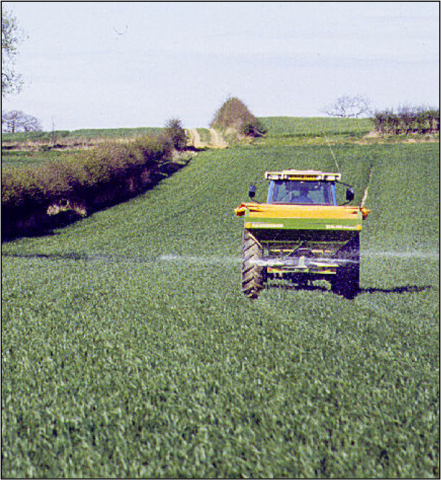The fourth part of a multi-stage review of how the arable cropping industry can best respond to the recent sharp increases in prices and availability of manufactured fertilisers has been released.
Funded by UK Flour Millers and authored by ADAS crop physiologists Prof Roger Sylvester-Bradley and Dr Sarah Clarke, this part focused the milling wheat market – where the grain protein content affects the price received by farmers. The report builds on earlier parts of the review and explores how to manage late nitrogen application in milling wheat.
The review considered:
- historic trends in grain protein of wheat
- responses of milling wheat crops to fertiliser nitrogen applied in spring and later in summer
- premiums paid for achieving protein levels that exceed fixed thresholds
The review concluded that milling wheat growers should temper their decisions on late applications of extra nitrogen (N) in 2022 according to
- the premium on offer for exceeding the protein threshold
- whether they have reduced their spring nitrogen applications due to high prices in 2022
- whether late nitrogen has usually been used in the past
- the farm’s past success in meeting the criteria for premium payment
Contact Prof Roger Sylvester-Bradley roger.sylvester-bradley@adas.co.uk or Dr Sarah Clarke sarah.clarke@adas.co.uk for more information.
Previous reports
Part one
The first part addressed how to adjust nitrogen rates in response to increases in nitrogen fertiliser prices and included an assessment of the impact of these changes on the yield of wheat, barley and oilseed rape.
Part two
Building on part one, this report assessed the impact on other aspects of fertiliser management and includes information on:
- Which crops, fields and nitrogen splits to prioritise
- The influence of expected yield
- Management of organic materials
- Achieving milling and malting specification
- The value of precision nitrogen use
- Calculating the nitrogen price
- Management of other nutrients
- Longer-term implications
Part three
Part three examines whether the wheat and barley findings are appropriate for the oats sector and, if not, how oats growers can best respond to the current prices and availability of manufactured fertilisers.











